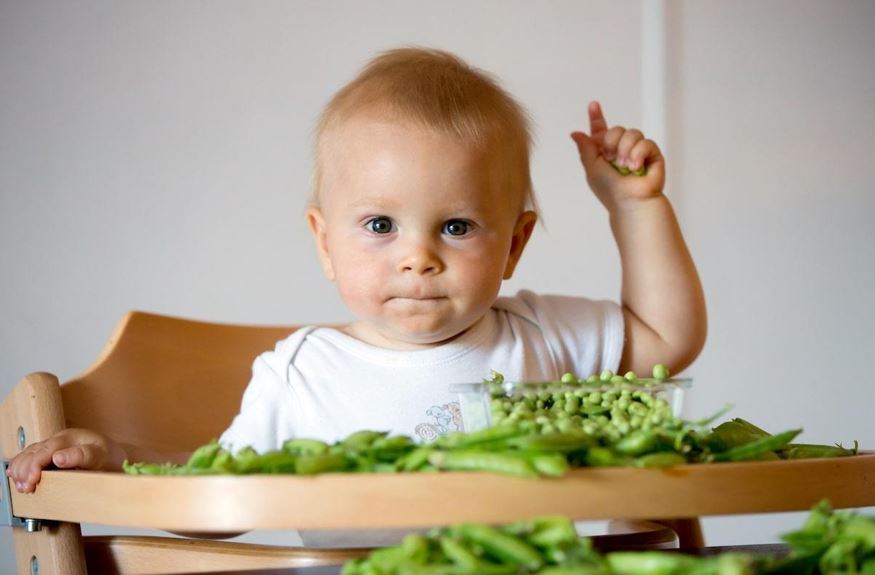
Many parents find that mealtimes become more difficult as their toddler gains independence. Although it can be very frustrating, fussy eating is a normal phase in your toddler’s development. It will get better with time.
Try not to get anxious and concerned about mealtimes. If you're able to maintain a calm and positive attitude, this will be better for both you and your toddler.
Even if they refuse food at times, most toddlers will eat enough to keep them going. Keep in mind that your child's stomach is still small, so he won't be able to eat as much in one go. If he doesn’t want any more, don't try to force him to have more.

Most toddlers go through a phase where they only eat a few foods. This is a natural part of their growth. It's partly due to a condition known as food neophobia, which is the fear of trying new foods. Around the age of two, many toddlers experience this. Don't worry, this is just a phase that will pass.
Your toddler will most likely eat what he is familiar with. He'll need time to learn that trying new foods is both safe and enjoyable. By watching you and others eat foods he's not sure about, he'll gain confidence.
Making sure your toddler gets plenty of exercise will also help. He will develop a strong appetite for his meals if he rushes around and plays active games.
Eat as a family when you can: As much as possible, eat with your toddler. If you and your partner both work full-time, this may be difficult, but try to make time when you can. Eat the same foods as your toddler during shared mealtimes. Toddlers copy their parents and other children when it comes to trying new foods.
Stay positive Tell your toddler how much you like the food you're eating. You’re his role model, so if you're excited your toddler may be more willing to try them. You can always put on a brave face if you don't like Brussels sprouts or broccoli!
Make mealtimes relaxed and enjoyable Arrange for your toddler to eat with other kids as much as possible. Invite one of your toddler's nursery or preschool friend over for tea. Your toddler may eat more when he sees others his own age happily tucking in.
Make mealtimes consistent Work out a daily feeding routine that works with your toddler's sleep schedule during the day. Three meals and two or three nutritious snacks, spaced throughout the day, should be included. Toddlers thrive on routine and like to know what to expect next.
Keep your toddler interested Offer your toddler a savory course followed by a healthy dessert, such as fruit, at lunch and dinner. He may become bored with one taste after one course and want to try something new. Two courses also provide your toddler with two opportunities to consume the calories and nutrients he requires. He'll also get to try a wider variety of foods at each meal.
Involve your toddler When your toddler is old enough, involve him in grocery shopping by allowing him to assist you in finding items in the store. He can also assist you with table setting before meals. This and other small activities will help to promote healthy eating habits.
Signs that your toddler's had enough of a certain food, course or meal include:
Iron is a nutrient that's essential to your child's growth and development, but some kids don't have enough. Learn about what causes iron deficiency in children, how to recognize it and how to prevent it.
Iron helps transport oxygen from the lungs to the rest of the body and helps muscles to store and use oxygen. If your child's diet lacks iron, they might develop a condition called iron deficiency.
Iron deficiency in children is a common issue. It can occur at many levels, from a minor deficiency all the way to iron deficiency anemia — which is a condition in which blood doesn't have enough healthy red blood cells. Untreated iron deficiency can have affect on child's growth and development.
Babies are born with iron stored in their bodies, but a steady amount of additional iron is required to fuel a child's rapid growth and development. Here's a guide to iron needs at different ages:
|
Age group |
Recommended amount of iron a day |
|
7 - 12 months |
11 mg |
|
1 - 3 years |
7 mg |
|
4 - 8 years |
10 mg |
|
9 - 13 years |
8 mg |
|
14 - 18 years, girls |
15 mg |
|
14 - 18 years, boys |
11 mg |
Iron deficiency can impair your child's ability to function well. However, most signs and symptoms of iron deficiency in children do not appear until iron deficiency anemia occurs. Consult your child's doctor if he or she has risk factors for iron deficiency. Signs and symptoms of iron deficiency anemia might include:

To help your toddler get the iron they need, we’ve created Nutrisaine Toddler milk 1-3yrs. Just 300ml will provide your toddler with more than half of their daily requirement,
plus vitamins A, C and D.
Vitamins are essential substances that cannot be produced by the body and we need small amounts of vitamins for growth and development. Although many foods naturally contain vitamins but it is not always easy to get all the nutrients we require from diet alone. This list can help you discover the nutritional information for each vitamin or mineral and how it can benefit your child.
Vitamin A helps support healthy eyes
the lining of the mouth, nose, throat, lungs and digestive tract.
Vitamin B6 contributes to the release of energy from food
The key functions of Vitamin B12 are:
The key functions of Vitamin C are:
Collagen is the framework for the structure of bones, blood vessels, gums, teeth, skin and cartilage and is essential to keep them healthy and strong
The key functions of Vitamin D are:
which makes the up majority of bone structure.
The key functions of Omega 3 are:
The key functions of Calcium are:
The key functions of Zinc are:
The main functions of iron in the body are:
